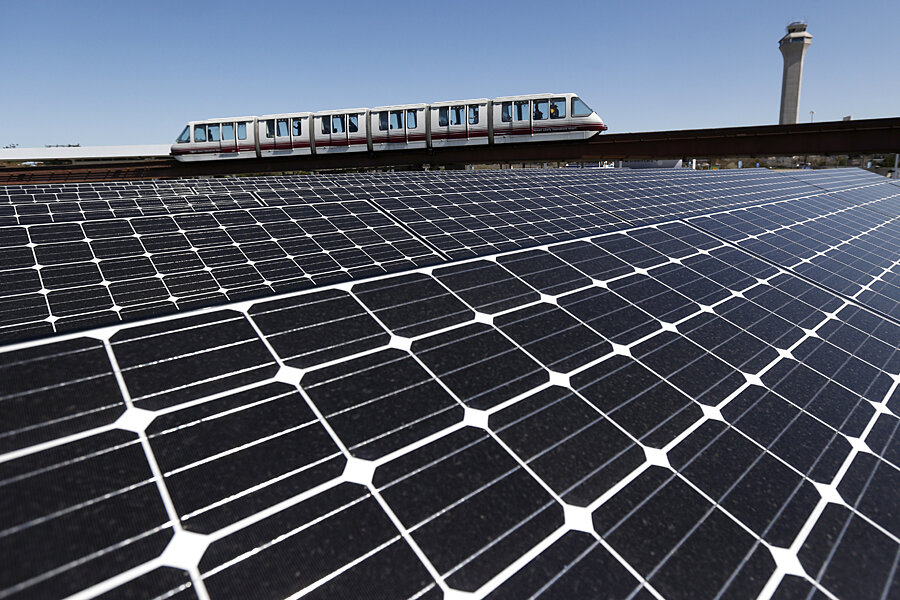How magnetism might keep solar panels clean (and efficient)
Loading...
Solar power is clean and renewable, but out of the box it’s not terribly efficient, at best turning about 25 percent of sunlight into electricity. And solar panels tend to be on rooftops, so they’re exposed to harsh elements, which further reduces their efficiency.
Now that problem has been solved, according to scientists at the Massachusetts Institute of Technology and the King Fahd University of Petroleum and Minerals (KFUPM) in Saudi Arabia. They report in the journal Applied Physics Letters that they’ve developed a method of making surfaces that actively control how particles and even fluids move across them.
“Most surfaces are passive,” Kripa Varanasi, an associate professor of mechanical engineering at MIT, told the MIT News Office. “They rely on gravity or other forces to move fluids or particles.” So the MIT and KFUPM team turned to magnetic fields to exert precise control over the behavior of matter that settles on such surfaces.
First, they created a surface with microscopic bumps and ridges, then impregnated it with what’s known as a “ferrofluid,” such as oil infused with tiny magnetic particles. A magnetic field is then applied to the ferrofluid, which then forms a magnetic cloak over any liquid or dust that gathers on the surface. This cloak then draws the contaminants off the surface.
This isn’t the first time researchers have used magnetism to manipulate fluids and particles, but previous efforts worked only on contaminants that already were magnetic, and required very strong magnetic fields to move them. The MIT-KFUPM solution is to create an ultra-slippery surface that reduces friction to nearly nothing and operates with weaker magnetic fields.
“This allows us to attain high velocities with small applied forces,” says Karim Khalil, an MIT graduate student and lead author of the team’s report.
Khalil explains that an important application of this system would be in the solar energy industry. Solar panels and mirrors for solar thermal power stations can quickly lose efficiency when soiled with dust or moisture. “Fouling is a big problem on such mirrors,” Varanasi says. “The data shows a loss of almost 1 percent of efficiency per week.”
So far the only remedy is hosing them down, an expensive task that’s also labor- and water-intensive. The MIT and KFUPM researchers say their technology could lead to systems that make the cleaning process less expensive, automatic and water-free.
The new method is especially important in Saudi Arabia, according to Numan Abu-Dheir of KFUPM and co-author of the report. “In the desert environment, dust is present on a daily basis,” he said. “[Saudis] need a way to reduce the dust accumulation.”
Although the MIT-KFUPM team used a magnetic fluid to develop the new technology, their report says other forces, ranging from electric fields to differences in temperature, can be exerted to manipulate the material and keep the surfaces clear of dust and liquid.







